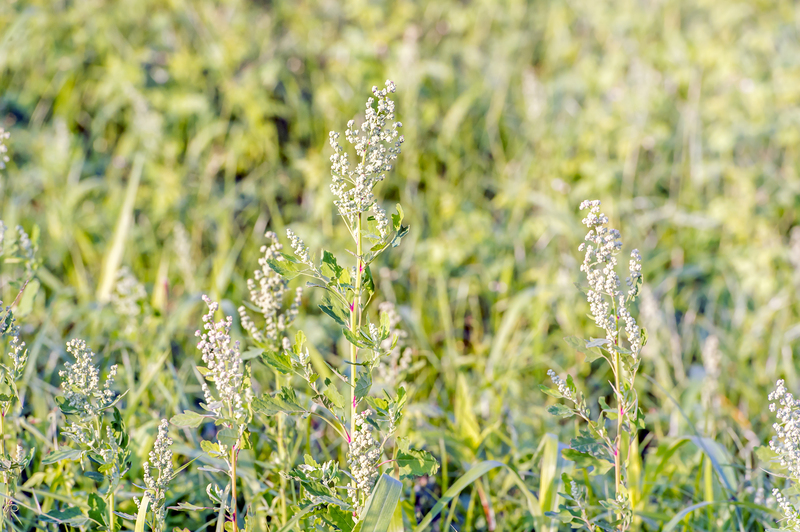Journey to a Revitalized Garden: Where to Begin
Posted on 24/06/2025
Journey to a Revitalized Garden: Where to Begin
Embarking on a journey to a revitalized garden can be exhilarating yet overwhelming. Whether you are a novice gardener or a seasoned green thumb, knowing where to start is crucial for achieving a lush, vibrant, and sustainable garden. In this comprehensive guide, you'll discover expert advice, step-by-step strategies, and creative inspirations designed for a stunning outdoor transformation. Let's dig into your personal journey towards rejuvenating your beloved garden!
Why Start a Garden Revitalization Journey?
Gardens, much like homes, need periodic care and reimagination. Over time, soil becomes depleted, plants overgrow, and designs fade into monotony. Revitalizing your garden breathes new life into your outdoor space and offers benefits such as higher property value, improved wellbeing, and increased biodiversity.
- Improved Aesthetics: A refreshed garden is pleasing to the eyes and uplifting for the spirit.
- Boosted Biodiversity: New plants attract birds, pollinators, and beneficial insects.
- Enhanced Functionality: Redesigned layouts maximize space for relaxation, play, or gardening productivity.
- Sustainable Practices: Incorporating eco-friendly principles keeps your garden healthy and resilient.

Evaluating Your Current Garden: The Essential First Step
Before taking action, assess your current garden's strengths and weaknesses. Walk around and take notes or photos. Ask yourself:
- Which plants thrive, and which ones struggle?
- Are there areas with poor drainage or compacted soil?
- Do you have recurring pest or disease problems?
- Is the layout practical for your needs?
- Which features do you love, and which could be improved?
Soil Quality Assessment
Healthy soil is the foundation of a successful garden revitalization. Test your soil's pH and nutrient level using at-home kits or by consulting local extension services. Poor soil structure and fertility are common roadblocks. Amending your soil early in the process pays dividends for years to come.
Microclimates and Sun Patterns
Sunlight patterns dramatically impact plant happiness. Document which parts of your garden receive full sun, partial shade, or deep shade throughout the day. These observations will inform the next steps in your journey to a transformed garden.
Setting Realistic Goals for Your Garden Journey
After evaluating your garden's current state, establish achievable goals. Are you looking for a low-maintenance retreat, a haven for wildlife, or a productive vegetable patch? Define your vision in practical terms and set milestones you can measure--this ensures steady progress.
- Install new flower beds by spring
- Attract native pollinators within one season
- Harvest homegrown vegetables within six months
Budgeting for Success
Every garden renovation requires some investment. Set a budget for essentials like topsoil, plants, mulch, and tools. Consider sourcing materials locally or trading with fellow gardeners for eco-friendly and cost-effective options.
Designing for a Modern, Healthy Garden Makeover
Garden design lays the groundwork for revitalization. Sketch out a rough plan of your space or use digital design tools. Keep these principles in mind:
- Layering: Arrange plants in tiers--tall in back, medium in the middle, low in front--for visual interest.
- Focal Points: Create features like a bench, fountain, or specimen tree to draw the eye.
- Pathways: Use gravel, stone, or mulch to define walkways and prevent soil compaction.
- Themes: Consider cohesive color schemes, cottage, zen, or wildflower garden styles.
Keep functionality and aesthetics balanced as you move forward in your journey to an invigorated garden.
Choosing the Right Plants for Revitalization
Select plants suited to your climate, soil, and sun conditions. Native varieties excel for resilience and wildlife support. Mix perennials, annuals, shrubs, and trees for year-round appeal and diversity.
- Perennials: Return each year with minimal fuss.
- Annuals: Offer vibrant color and quick coverage.
- Edibles: Infuse your landscape with delicious, fresh harvests.
- Native plants: Foster local ecosystems and minimize maintenance needs.
First Practical Steps to Rejuvenate Your Garden
With your plan and priorities set, it's time to take action. Here's where your journey to a regenerated garden truly begins.
Clearing and Cleanup
- Remove debris: Clear fallen branches, leaves, and outdated decor.
- Prune overgrown plants: Restore shape and vigor while boosting sunlight penetration.
- Weed thoroughly: Target invasive and unwanted species early.
- Edge beds and borders: Redefine garden areas for neatness.
Soil Rejuvenation
Feed your soil before you feed your plants. Blend in compost, organic fertilizers, and soil conditioners. Consider mulching to retain moisture and suppress weeds--a vital step in your garden restoration journey.
Upgrading Hardscape Elements
Don't neglect pathways, patios, or raised beds. Repair, replace or enhance these features to ensure durability and increase your revitalized garden's usability. Fresh gravel, stepping stones, or newly built raised beds can make a dramatic difference.
Planting and Reimagining Your Garden's Layout
Now for the creative part! Layout your chosen plants according to your design and microclimate notes. Prioritize biodiversity and continuous bloom by mixing flower shapes, colors, and bloom times.
- Cluster plants with similar needs together for efficient care.
- Integrate focal points such as birdbaths or sculptures as visual anchors.
- Interplant edibles with ornamentals for beauty and productivity.
Companion Planting Tips
Companion planting can minimize pests and maximize growth. Pair marigolds with tomatoes, lavender near roses, and beans alongside corn for natural harmony.
The Ongoing Journey: Maintenance and Seasonal Tasks
Regular care sustains your revitalized garden's vitality. Establish routines for watering, fertilizing, mulching, and deadheading spent blooms. Tune into the unique rhythm of the seasons with the following tips:
- Spring: Plant, mulch, and fertilize as new growth emerges.
- Summer: Water deeply, control weeds, and protect from pests.
- Autumn: Prune, collect seeds, and prepare beds for winter.
- Winter: Plan, order seeds, and sharpen your tools!
Integrating Sustainable Practices for a Resilient Garden
Modern garden revitalization embraces sustainability. Eco-friendly methods conserve resources, reduce waste, and ensure long-term health.
- Compost kitchen and garden waste for free, nutrient-rich fertilizer.
- Collect rainwater in barrels to minimize utility costs and promote drought resilience.
- Plant native species to reduce maintenance and support local wildlife.
- Bee-friendly flowers and no-pesticide policies encourage pollinators and beneficial insects.
Your revitalized garden journey will not only provide beauty and tranquility, but you'll help create a better world by choosing ecological practices.
Troubleshooting Common Challenges in Garden Rejuvenation
Even the best-laid plans encounter setbacks. Here's how to tackle common obstacles as you transform your garden:
- Poor Soil: Try raised beds or intensive composting to restore vitality.
- Excess Shade: Opt for shade-tolerant, woodland species like hostas or ferns.
- Pest Outbreaks: Introduce natural predators and organic controls before resorting to chemicals.
- Lack of Time: Mulch extensively and select low-maintenance varieties to reduce workload.
When to Call in the Pros
If you face persistent drainage issues, large tree concerns, or design paralysis, don't hesitate to consult with landscape designers or arborists. Expert advice can accelerate your journey to a revitalized garden.

Bringing It All Together: Your Garden Transformation Roadmap
Summing up, the journey to a revitalized garden is a blend of honest assessment, careful planning, inspired design, hard work, and ongoing care. Here's your step-by-step action list:
- Evaluate and observe your space
- Set clear, practical goals
- Design with vision and flexibility
- Prepare your soil and structures
- Plant mindfully, emphasizing biodiversity and beauty
- Maintain and adapt with the seasons
Each phase in your journey adds a new layer of beauty and health to your landscape. Remember, garden revitalization is an evolving process--be patient and celebrate every improvement, no matter how small.
Conclusion: The Beginning of a Beautiful, Sustainable Garden Journey
Getting started on your journey to a revitalized garden is all about taking deliberate, informed steps. By assessing your space, defining goals, creating a thoughtful design, and embracing eco-friendly practices, you're well on your way to cultivating a vibrant outdoor sanctuary. Enjoy your garden's transformation and the countless rewards it brings to your home, your health, and the planet.
Are you ready to begin your journey to a renewed and thriving garden? Start today--nature awaits your creative touch!

